
Ayia Napa: Cyprus' Sun-Kissed Paradise
Discover Ayia Napa, Cyprus' ultimate sun-soaked destination offering breathtaking beaches, rich history, and an electrifying nightlife that promises unforgettable memories.
Ayia Napa, located on the southeastern coast of Cyprus, is a tourist haven known for its stunning beaches and vibrant nightlife. This once quiet fishing village has transformed into a bustling resort town, attracting visitors from all corners of the globe. The azure waters and golden sands of Nissi Beach and Makronissos Beach are perfect for sunbathing, swimming, and water sports. Families and thrill-seekers alike will find plenty of activities to keep them entertained. Beyond its beaches, Ayia Napa offers a rich tapestry of history and culture. The medieval Ayia Napa Monastery, nestled in the heart of the town, is a serene oasis with its beautiful courtyard and ancient chapel. For those interested in the island's maritime history, the Thalassa Museum showcases the relationship between Cyprus and the sea, featuring artifacts and exhibits dating back to ancient times. As the sun sets, Ayia Napa transforms into a lively nightlife hub. The town is famed for its energetic clubs, bars, and restaurants that cater to all tastes. From traditional Cypriot taverns serving mouthwatering meze to international dining options, there's something to satisfy every palate. Whether you're looking to dance the night away or enjoy a relaxed evening by the sea, Ayia Napa promises a memorable experience for every visitor.
Local tips in Ayia Napa
- Visit Nissi Beach early in the morning to avoid the crowds and secure a good spot.
- Explore the Ayia Napa Sea Caves for stunning views and unique photo opportunities.
- Try local Cypriot dishes like souvlaki and halloumi at traditional taverns.
- Rent a bicycle or scooter to easily explore the town and its surrounding areas.
- Check the local events calendar for festivals and live music performances during your stay.
Ayia Napa: Cyprus' Sun-Kissed Paradise
Ayia Napa, located on the southeastern coast of Cyprus, is a tourist haven known for its stunning beaches and vibrant nightlife. This once quiet fishing village has transformed into a bustling resort town, attracting visitors from all corners of the globe. The azure waters and golden sands of Nissi Beach and Makronissos Beach are perfect for sunbathing, swimming, and water sports. Families and thrill-seekers alike will find plenty of activities to keep them entertained. Beyond its beaches, Ayia Napa offers a rich tapestry of history and culture. The medieval Ayia Napa Monastery, nestled in the heart of the town, is a serene oasis with its beautiful courtyard and ancient chapel. For those interested in the island's maritime history, the Thalassa Museum showcases the relationship between Cyprus and the sea, featuring artifacts and exhibits dating back to ancient times. As the sun sets, Ayia Napa transforms into a lively nightlife hub. The town is famed for its energetic clubs, bars, and restaurants that cater to all tastes. From traditional Cypriot taverns serving mouthwatering meze to international dining options, there's something to satisfy every palate. Whether you're looking to dance the night away or enjoy a relaxed evening by the sea, Ayia Napa promises a memorable experience for every visitor.
When is the best time to go to Ayia Napa?
Iconic landmarks you can’t miss
Ayia Napa Harbour
Experience the vibrant atmosphere of Ayia Napa Harbour, where stunning views and Mediterranean charm await every visitor.
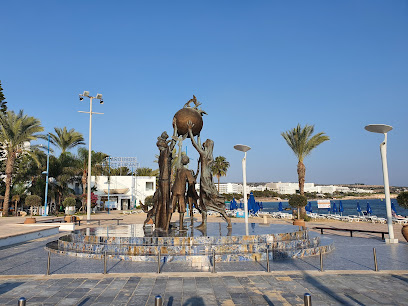
Cavo Greco National Park
Explore Cavo Greco National Park, where stunning cliffs meet crystal-clear waters in a nature lover's paradise in Ayia Napa, Cyprus.
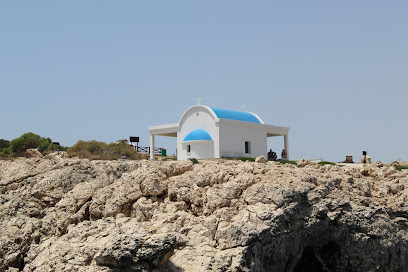
Sculpture Park
Discover the beauty of art and nature intertwined at Sculpture Park in Ayia Napa, a must-visit destination for art lovers and nature enthusiasts alike.
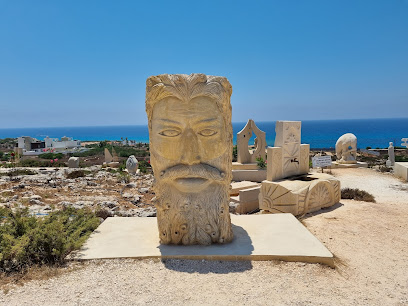
WaterWorld Themed Waterpark Ayia Napa
Experience the magic of Greek mythology at WaterWorld Themed Waterpark in Ayia Napa, Cyprus, offering thrilling attractions for families and adventure seekers alike.
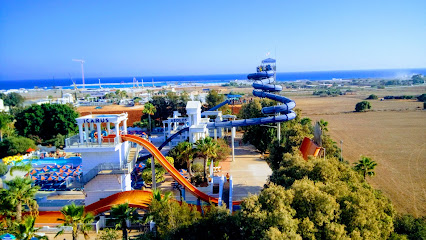
Parko Paliatso Luna Park
Discover the excitement of Parko Paliatso Luna Park, a thrilling amusement park in Ayia Napa, Cyprus, perfect for fun family adventures and unforgettable memories.
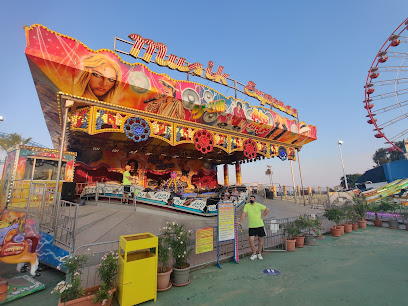
Cape Cavo Greco
Discover the breathtaking beauty of Cape Cavo Greco, a nature preserve in Cyprus known for its dramatic cliffs, crystal-clear waters, and vibrant marine life.
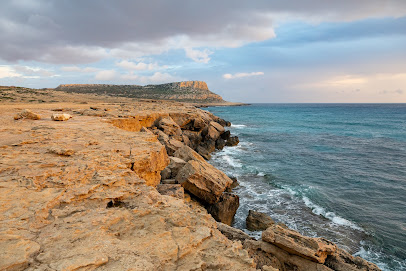
Sea Caves
Discover the enchanting Sea Caves of Ayia Napa, Cyprus, where breathtaking views and unique geological formations await your exploration.
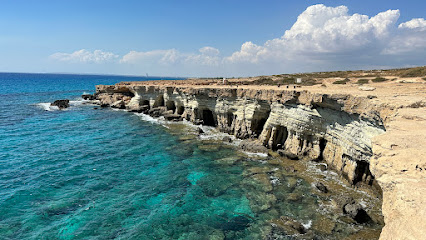
Ayia Napa Monument
Explore the rich history and stunning architecture of the Ayia Napa Monument, a cultural icon in Cyprus that captivates every visitor.
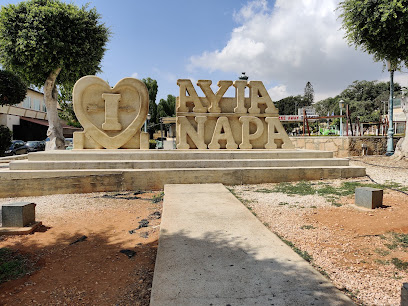
Twins Shop
Explore Twins Shop in Ayia Napa for unique souvenirs and quality vaporizers, capturing the essence of Cyprus in every purchase.
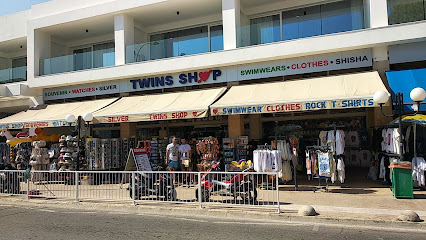
Bridge of Love
Explore the romantic Bridge of Love in Ayia Napa, Cyprus, a picturesque destination perfect for couples and unforgettable memories.
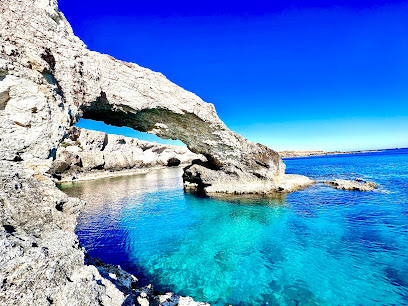
Crow's Arch
Experience the breathtaking views and stunning geological formations at Crow's Arch, a must-visit natural landmark in Protaras, Cyprus.
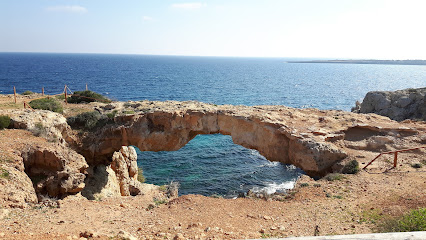
Ayia Napa Island
Explore Ayia Napa Island: a paradise of stunning beaches, vibrant nightlife, and rich cultural heritage in Cyprus.
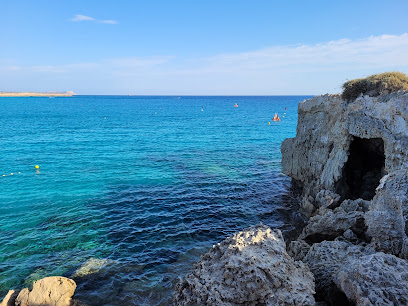
Monastery of Ayia Napa
Discover the rich history and serene beauty of the Monastery of Ayia Napa, a must-visit religious destination in Cyprus.
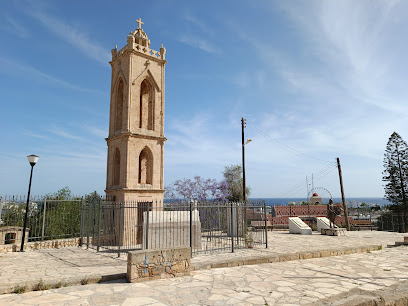
Ayioi Anargiroi Church
Explore the tranquil beauty of Ayioi Anargiroi Church in Ayia Napa, a captivating example of Greek Orthodox architecture and spiritual heritage.
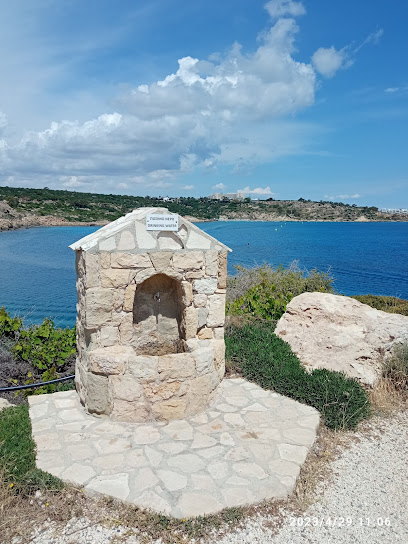
Monument of Peace
Explore the Monument of Peace in Ayia Napa, where breathtaking views and serene landscapes embody the essence of tranquility and unity.
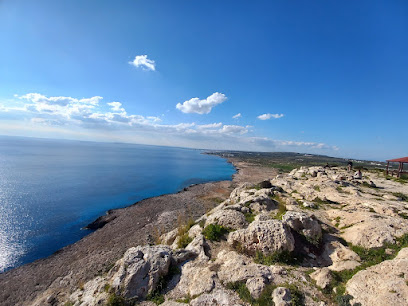
Unmissable attractions to see
Holy Church of Saint Lazarus
Explore the Holy Church of Saint Lazarus in Larnaca, a stunning Byzantine monument and a spiritual center rich in history and culture.
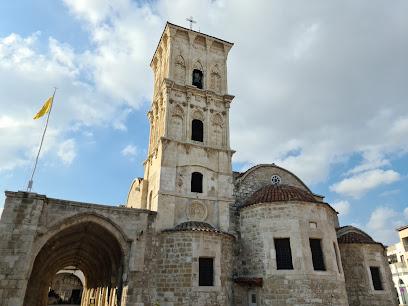
Ayia Napa Harbour
Experience the vibrant charm of Ayia Napa Harbour, where stunning views, delightful dining, and exciting nightlife await you on the beautiful coast of Cyprus.
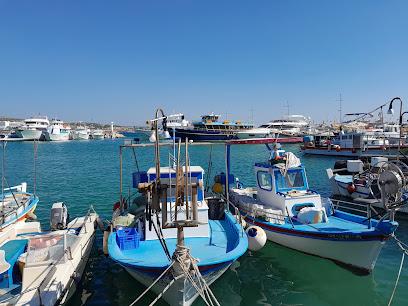
Cavo Greco National Park
Explore the stunning landscapes and unique biodiversity of Cavo Greco National Park in Ayia Napa, Cyprus – a must-visit for nature lovers and adventure seekers.
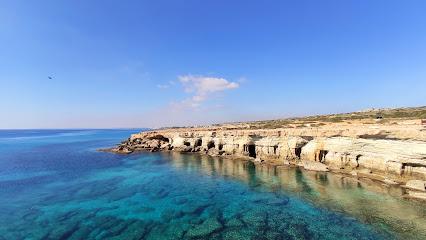
Sculpture Park
Discover the enchanting Sculpture Park in Ayia Napa, Cyprus, where art and nature beautifully intertwine amidst stunning Mediterranean landscapes.
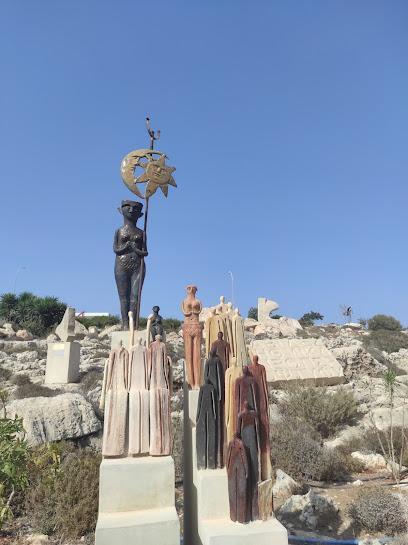
Nissi Beach
Experience the stunning beauty and vibrant atmosphere of Nissi Beach, the premier destination for sun and fun in Cyprus.
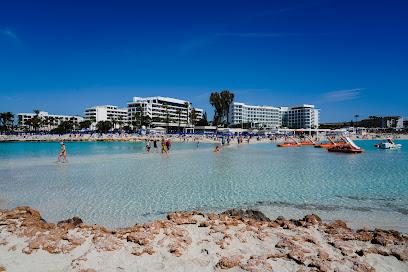
WaterWorld Themed Waterpark Ayia Napa
Experience the thrill of WaterWorld Themed Waterpark Ayia Napa, where Greek mythology meets water adventure for the ultimate family fun day.
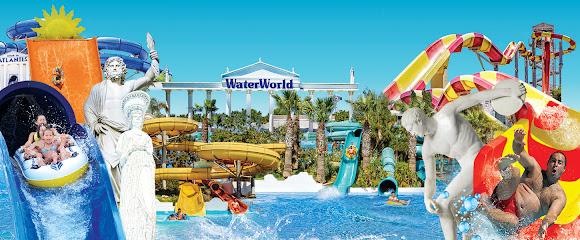
Cape Cavo Greco
Experience the breathtaking coastal beauty and rich biodiversity of Cape Cavo Greco, a stunning nature preserve in Cyprus.
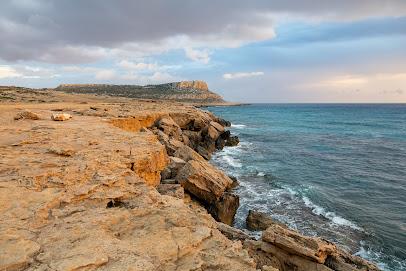
Parko Paliatso Luna Park
Experience the thrill of rides and family fun at Parko Paliatso Luna Park in Ayia Napa, Cyprus - a must-visit amusement park for all ages!
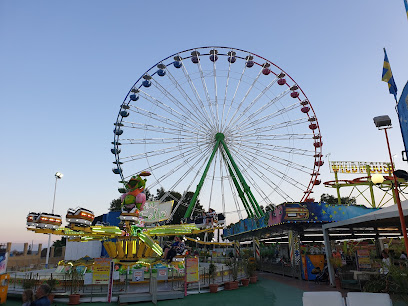
Finikoudes Beach
Discover the golden sands and vibrant atmosphere of Finikoudes Beach, the ultimate destination for sun, relaxation, and local flavors in Larnaca, Cyprus.
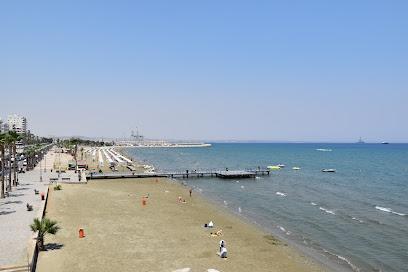
Sea Caves
Discover the stunning Sea Caves of Ayia Napa, a natural paradise offering breathtaking views, swimming, snorkeling, and unforgettable adventures in Cyprus.
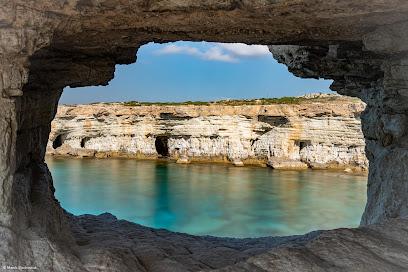
Larnaka Medieval Fort
Explore Larnaka Medieval Fort, a historical gem in Cyprus offering breathtaking views and a glimpse into the island's storied past.
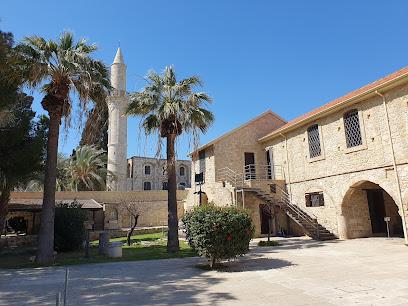
Ayia Napa Monument
Explore the historical Ayia Napa Monument, a serene landmark in Cyprus surrounded by lush gardens, perfect for leisurely strolls and cultural discovery.

Bridge of Love
Discover the romantic charm of the Bridge of Love, a stunning attraction in Ayia Napa, Cyprus, perfect for couples and nature lovers alike.

Konnos Beach
Experience the natural beauty and vibrant atmosphere of Konnos Beach in Cyprus, a perfect getaway for relaxation and adventure.
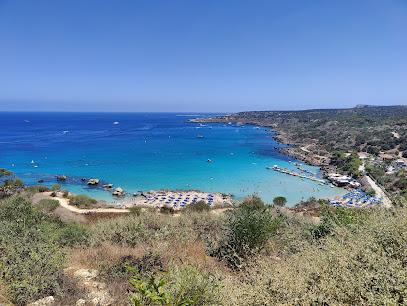
Magic Dancing Waters Live Show
Discover the mesmerizing spectacle of water and light at Magic Dancing Waters Live Show in Protaras, Cyprus - a must-see for every traveler.

Essential places to dine
Ocean Basket Agia Napa
Experience authentic seafood dining at Ocean Basket Agia Napa – where fresh flavors meet coastal charm in every bite.
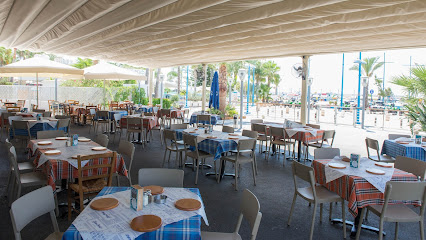
Hard Rock Cafe
Savor classic American cuisine amidst rock 'n' roll history at Hard Rock Cafe Ayia Napa – where every meal is a celebration of flavor.
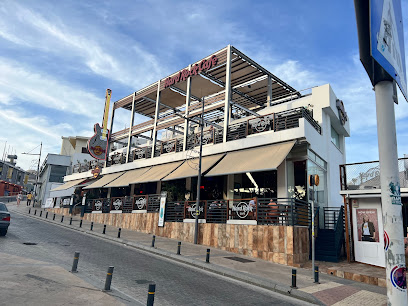
En Yevo Tavernaki
Discover the rich flavors of Greece at En Yevo Tavernaki in Ayia Napa - where every meal tells a story.
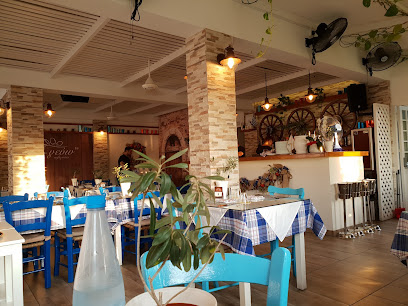
Los Bandidos Restaurant Ayia Napa
Savor authentic Mexican flavors at Los Bandidos in Ayia Napa—where every dish tells a story of culinary tradition.
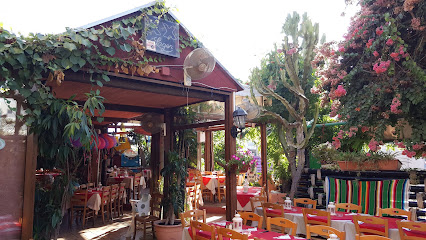
Isaac Fish Tavern
Experience fresh seafood delights at Isaac Fish Tavern in Ayia Napa – where every dish tells a story of Mediterranean flavor.

Sesoula Kalamaki
Experience authentic Greek flavors at Sesoula Kalamaki in Ayia Napa—where every dish tells a story.
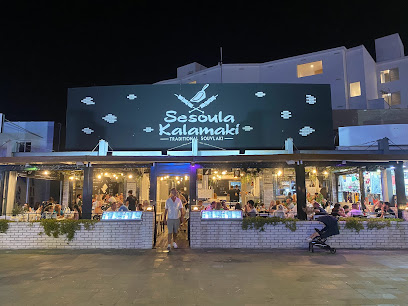
Old Village Tavern
Discover the heart of Greek gastronomy at Old Village Tavern in Ayia Napa—where every meal tells a story.
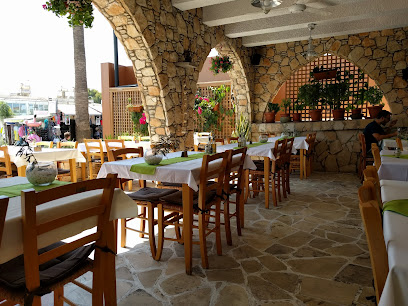
Tony's Taverna
Experience authentic Cypriot cuisine at Tony's Taverna in Ayia Napa - where flavor meets hospitality in a vibrant setting.
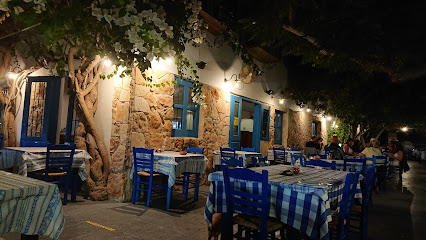
Farmers Traditional Tavern
Savor the flavors of Cyprus at Farmers Traditional Tavern – where tradition meets taste in every dish.

STAMNA TAVERN
Experience authentic Greek cuisine at Stamna Tavern in Ayia Napa - where every meal tells a story of tradition and flavor.
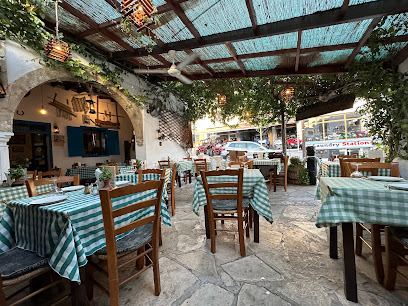
AVRA authentic cypriot kitchen
Savor authentic Greek cuisine at AVRA Authentic Cypriot Kitchen in Ayia Napa – where every meal is a celebration of flavor and culture.
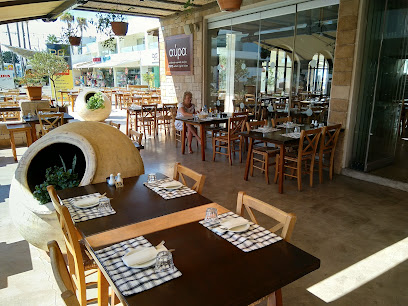
Bed Rock Restaurant
Experience authentic Cypriot flavors blended with international cuisine at Bed Rock Restaurant in Ayia Napa.
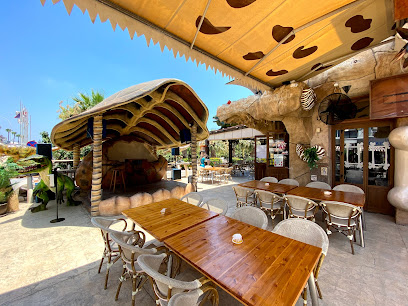
Quadro Restaurant
Experience authentic Italian flavors at Quadro Restaurant in Ayia Napa, where every dish tells a story and every bite is a delight.
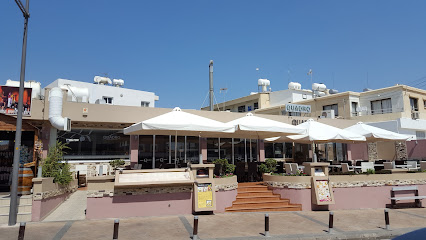
Hungry Horse Taverna & Μαγειριόν
Experience authentic Cypriot cuisine in a cozy atmosphere at Hungry Horse Taverna in Ayia Napa.
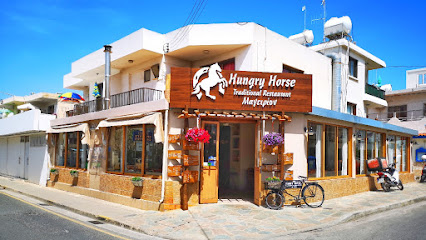
Davinci Napiana Italian Cuisine
Experience authentic Italian cuisine at Davinci Napiana in Ayia Napa - where Mediterranean flavors meet exceptional service.
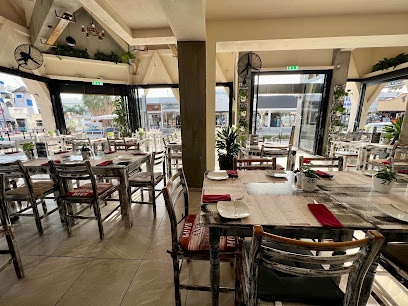
Markets, malls and hidden boutiques
Twins Shop
Explore Twins Shop in Ayia Napa for unique souvenirs and top-quality vaporizers, capturing the essence of your Cypriot getaway.
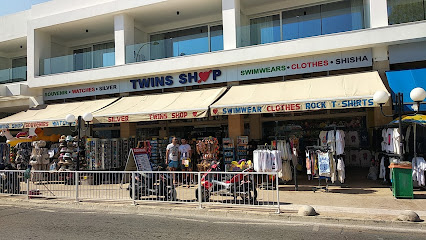
Plus Discount Market
Visit Plus Discount Market in Ayia Napa for affordable groceries, local souvenirs, and a great selection of beverages, all in one convenient location.
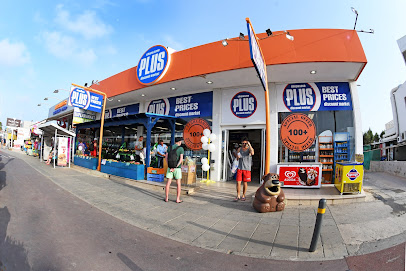
Stathis Shopping center
Experience the vibrant shopping scene at Stathis Shopping Center in Ayia Napa, where unique gifts and local treasures await every traveler.

Incredible Universe
Discover Incredible Universe in Ayia Napa, a supermarket offering a wide range of products at fantastic prices for every traveler’s needs.

Plaza Shopping Center
Explore the Plaza Shopping Center in Ayia Napa for a unique shopping experience filled with local gifts and treasures from Cyprus.

The Oriental Home - Shop & Entertainment
Experience the vibrant nightlife of Ayia Napa at The Oriental Home, a premier bar and hookah lounge offering a unique blend of culture and relaxation.

Taste of Life
Explore the flavors of Cyprus at Taste of Life in Ayia Napa, offering gourmet products and unique souvenirs that embody local culinary traditions.
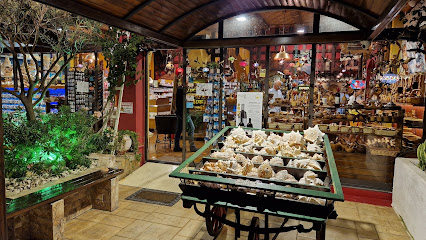
Euroshop
Discover a world of flavors and convenience at Euroshop, Ayia Napa's favorite supermarket for tourists and locals alike.
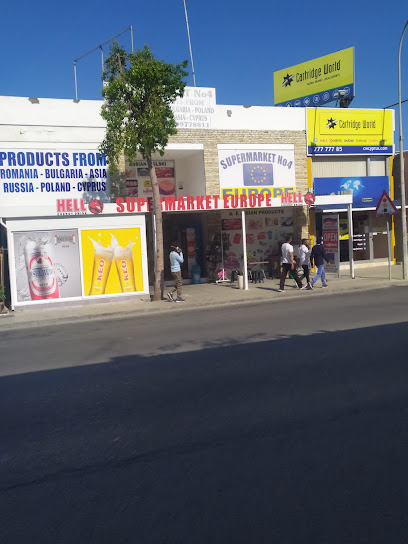
London Clothing Company
Discover the ultimate shopping experience at London Clothing Company in Ayia Napa, where style meets the sun.

Napas North Entry Supermarket
Experience the essence of Cyprus at Napas North Entry Supermarket - your go-to spot for local flavors and essentials in Ayia Napa.
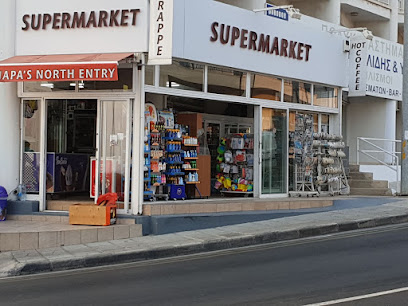
Aphrodite Gift Shop
Discover unique souvenirs and local crafts at Aphrodite Gift Shop in Ayia Napa, capturing the spirit of Cyprus in every unique item.
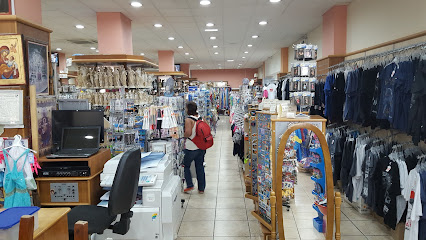
Rossos Supermarket
Experience convenience at Rossos Supermarket in Ayia Napa, offering a wide range of groceries and local products for an enjoyable stay.
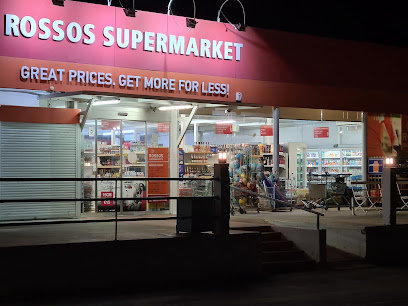
Designer ⭐ Lounge
Discover the chicest fashion at Designer Lounge in Ayia Napa, where style meets local flair for an unforgettable shopping experience.
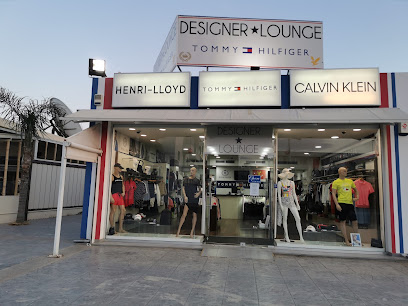
Tonias No.2 Souvenir Shop
Explore Tonias No.2 Souvenir Shop in Ayia Napa for unique souvenirs, refreshing drinks, and a taste of local culture in a charming setting.
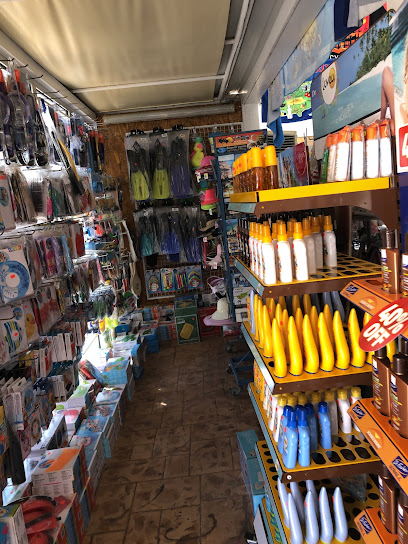
Five Colours
Explore Five Colours in Ayia Napa, a vibrant candy store offering a delightful selection of sweets and unique ice cream flavors.

Essential bars & hidden hideouts
Tommy's Pub
Discover Tommy's Pub in Agia Napa, where great food, drinks, and live entertainment create an unforgettable experience.
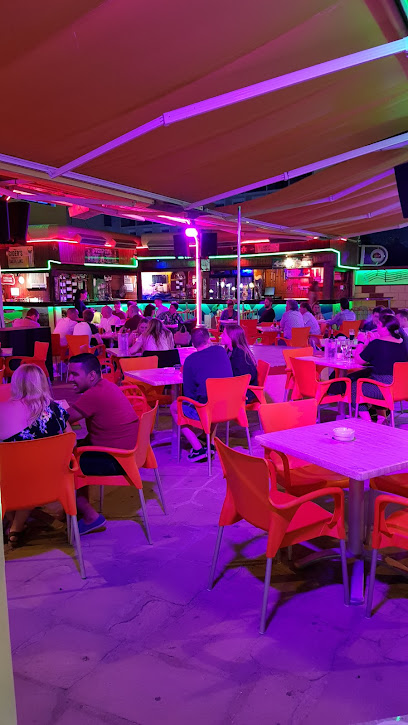
Senior Frog's Ayia Napa
Discover the vibrant nightlife at Senior Frog's Ayia Napa, where signature cocktails and live entertainment create unforgettable experiences.
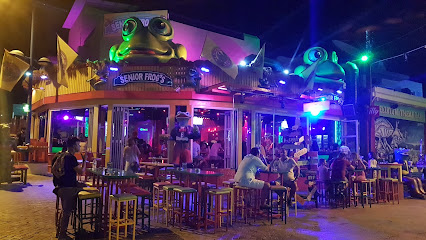
The Square Bar
Experience the vibrant nightlife at The Square Bar in Ayia Napa, where great drinks and lively ambiance meet.
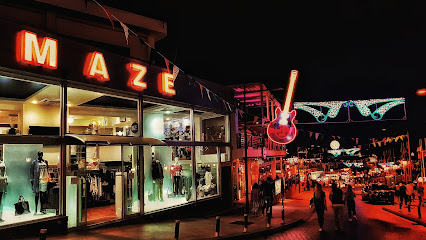
Paddy's Irish Bar
Discover the lively charm of Paddy's Irish Bar in Ayia Napa, where Irish hospitality meets the vibrant nightlife of Cyprus.
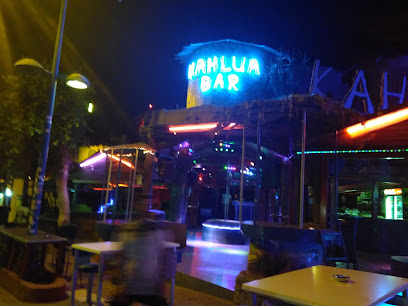
Living Room Cafe - Lounge Bar
Discover the perfect blend of relaxation and entertainment at Living Room Cafe - Lounge Bar in Ayia Napa, where every evening is a celebration.
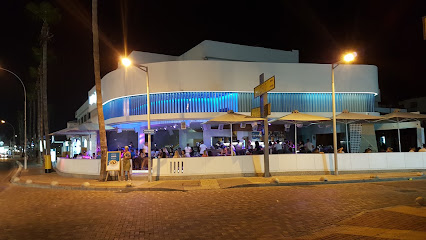
Odyssos Tavern Sports Bar
Experience the thrill of live sports at Odyssos Tavern Sports Bar in Ayia Napa, where great food and vibrant atmosphere meet.
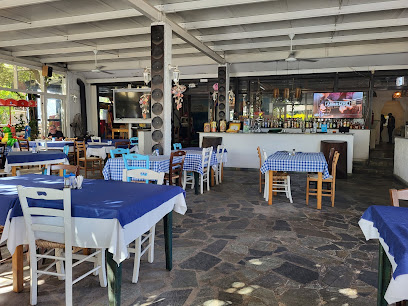
Ambassaden Bar
Discover the lively nightlife at Ambassaden Bar in Ayia Napa, where great drinks and vibrant music create unforgettable moments.
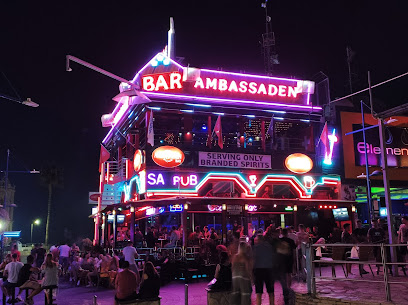
Pirates Inn Ayia Napa
Experience the vibrant nightlife at Pirates Inn Ayia Napa, where cocktails flow and the music keeps the energy alive until dawn.
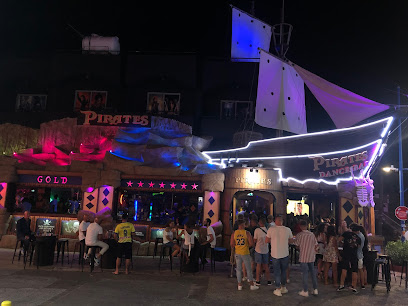
Pepper Bar Lounge
Experience the vibrant nightlife of Ayia Napa at Pepper Bar Lounge, where creative cocktails meet a lively atmosphere in Cyprus.
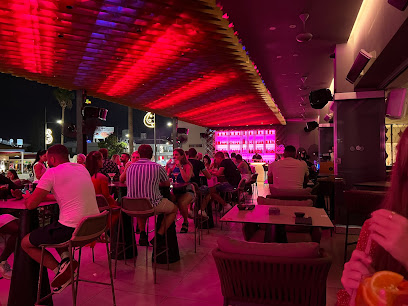
LOCO BONGO BAR
Discover the lively nightlife of LOCO BONGO BAR in Ayia Napa, where vibrant music, delicious cocktails, and unforgettable memories await.
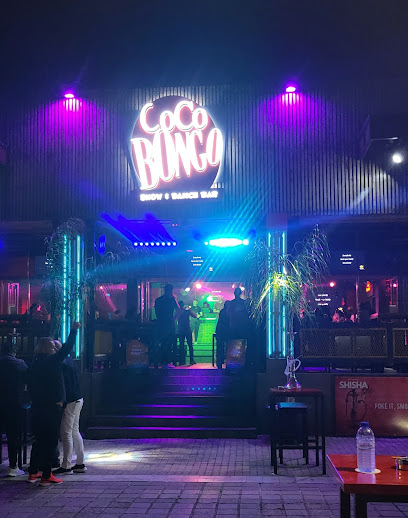
Craig's Bar
Discover Craig's Bar in Ayia Napa - where lively entertainment, delicious cocktails, and a friendly atmosphere await every visitor.
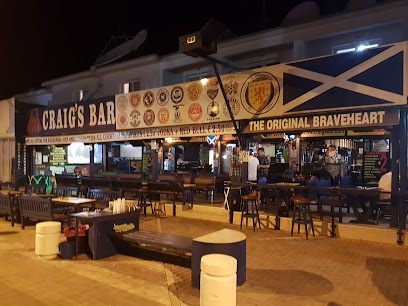
Grabbarna Grus
Discover vibrant nightlife at Grabbarna Grus, Ayia Napa's top bar for cocktails and socializing in a lively atmosphere.

The Vikings Bar (Taffy's)
Discover the lively spirit of Ayia Napa at The Vikings Bar (Taffy's) – your ultimate nightlife destination in Cyprus.
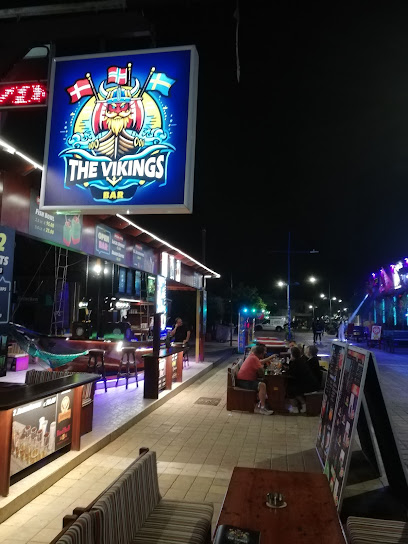
The Stumble Inn
Discover The Stumble Inn, a vibrant bar and restaurant in Ayia Napa, Cyprus, perfect for breakfast, cocktails, and unforgettable nights out.
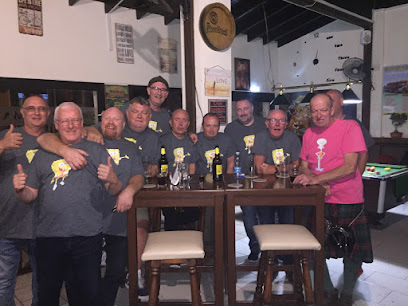
Solsidan Bar
Experience the vibrant nightlife at Solsidan Bar in Ayia Napa, where great drinks, delicious food, and live sports come together for an unforgettable evening.
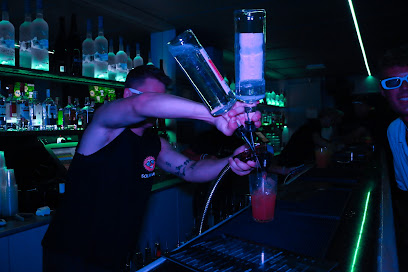
Local Phrases
-
- HelloΓειά σας
[Yia sas] - GoodbyeΑντίο
[Adio] - YesΝαι
[Ne] - NoΌχι
[Ohi] - Please/You're welcomeΠαρακαλώ
[Parakalo] - Thank youΕυχαριστώ
[Efharisto] - Excuse me/SorryΣυγγνώμη
[Signomi] - How are you?Τι κάνετε;
[Ti kanete?] - Fine. And you?Καλά. Εσείς;
[Kala. Esis?] - Do you speak English?Μιλάτε Αγγλικά;
[Milate Agglika?] - I don't understandΔεν καταλαβαίνω
[Den katalaveno]
- HelloΓειά σας
-
- I'd like to see the menu, pleaseΘα ήθελα να δω το μενού, παρακαλώ
[Tha ithela na do to menou, parakalo] - I don't eat meatΔεν τρώω κρέας
[Den troo kreas] - Cheers!Υγεία!
[Ygeia!] - I would like to pay, pleaseΘα ήθελα να πληρώσω, παρακαλώ
[Tha ithela na plirosa, parakalo]
- I'd like to see the menu, pleaseΘα ήθελα να δω το μενού, παρακαλώ
-
- Help!Βοήθεια!
[Voithia!] - Go away!Φύγε!
[Fige!] - Call the Police!Καλέστε την Αστυνομία!
[Kaleste tin Astynomia!] - Call a doctor!Καλέστε γιατρό!
[Kaleste giatro!] - I'm lostΈχω χαθεί
[Eho hathee] - I'm illΕίμαι άρρωστος
[Eimai arrostos]
- Help!Βοήθεια!
-
- I'd like to buy...Θα ήθελα να αγοράσω...
[Tha ithela na agorasoo...] - I'm just lookingΑπλά κοιτάω
[Apla kitao] - How much is it?Πόσο κοστίζει;
[Poso kostizi?] - That's too expensiveΑυτό είναι πολύ ακριβό
[Afto ine poli akribo] - Can you lower the price?Μπορείτε να μειώσετε την τιμή;
[Boreite na meiosete tin timi?]
- I'd like to buy...Θα ήθελα να αγοράσω...
-
- What time is it?Τι ώρα είναι;
[Ti ora ine?] - It's one o'clockΕίναι μία ώρα
[Ine mia ora] - Half past (10)Μισή (10)
[Mise (deka)] - MorningΠρωί
[Proi] - AfternoonΑπόγευμα
[Apoyevma] - EveningΒράδυ
[Vradi] - YesterdayΧθες
[Hthes] - TodayΣήμερα
[Simera] - TomorrowΑύριο
[Afrio] - 1Ένα
[Ena] - 2Δύο
[Dyo] - 3Τρία
[Tria] - 4Τέσσερα
[Tessera] - 5Πέντε
[Pente] - 6Έξι
[Exi] - 7Επτά
[Epta] - 8Οκτώ
[Okto] - 9Εννέα
[Ennea] - 10Δέκα
[Deka]
- What time is it?Τι ώρα είναι;
-
- Where's a/the...?Πού είναι ένα/το...;
[Pou ine ena/to...?] - What's the address?Ποια είναι η διεύθυνση;
[Pia ine i diefthinsi?] - Can you show me (on the map)?Μπορείτε να μου δείξετε (στο χάρτη);
[Boreite na mou deksete (sto charti)?] - When's the next (bus)?Πότε είναι το επόμενο (λεωφορείο);
[Pote ine to epomeno (leoforeio)?] - A ticket (to ....)Ένα εισιτήριο (για...)
[Ena isitirio (ya...)]
- Where's a/the...?Πού είναι ένα/το...;
History of Ayia Napa
-
Ayia Napa's history dates back to antiquity, with evidence suggesting that the area was inhabited as early as the Neolithic period. Ancient artifacts and ruins found in the region indicate that it was once a thriving settlement. The name 'Ayia Napa' is derived from a Venetian-era monastery situated in the center of the town. 'Napa' means 'wooded valley,' signifying the area's lush greenery in ancient times.
-
The Monastery of Ayia Napa, built during the Venetian rule in the 15th century, is one of the most significant landmarks in the town. The monastery is dedicated to 'Our Lady of the Forests' and served as a spiritual hub for the local community. It features a beautiful courtyard, a central fountain, and an ancient sycamore tree believed to be over 600 years old. The Venetian influence is evident in the architecture and design of the monastery.
-
During the Ottoman period, from the late 16th century to the late 19th century, Ayia Napa was a small fishing village. The Ottomans imposed taxes and regulations that impacted the local economy. Despite these challenges, the community remained resilient, relying on agriculture and fishing as their primary sources of livelihood.
-
Under British rule, which began in 1878, Ayia Napa saw significant infrastructural development. Roads, schools, and hospitals were constructed, improving the quality of life for its residents. The British influence also brought about changes in governance and administration, integrating Ayia Napa more closely with the rest of Cyprus and the British Empire.
-
Following Cyprus' independence from British rule in 1960, Ayia Napa began to develop into a tourist destination. The discovery of its beautiful beaches and natural landscapes attracted visitors from around the world. Investments in hotels, restaurants, and entertainment facilities transformed the town into a bustling tourist hub, marking the beginning of its modern era.
-
Today, Ayia Napa is renowned for its vibrant nightlife, stunning beaches, and cultural heritage. The town hosts numerous festivals and events celebrating its history and traditions. The local government has made efforts to preserve historical sites while promoting sustainable tourism. Ayia Napa continues to evolve, balancing its rich history with the demands of contemporary tourism.
Ayia Napa Essentials
-
Ayia Napa is located on the southeastern coast of Cyprus. The nearest international airport is Larnaca International Airport (LCA), approximately 45 kilometers away. From Larnaca, you can reach Ayia Napa by taxi, which takes around 40 minutes, or by bus, which is a more economical option but takes a bit longer. Direct buses operate frequently from Larnaca Airport to Ayia Napa, and car rentals are available at the airport for those who prefer to drive.
-
Ayia Napa is relatively small, and many attractions are within walking distance. For longer journeys, local buses are an affordable and efficient way to get around, with routes connecting Ayia Napa to other parts of Cyprus. Taxis are also readily available and can be hailed on the street or booked through apps. For more flexibility, consider renting a car or a scooter, particularly if you plan to explore the surrounding areas and beaches.
-
The official currency in Cyprus is the Euro (EUR). Credit and debit cards are widely accepted in hotels, restaurants, and shops. However, it is advisable to carry some cash for smaller establishments and markets. ATMs are plentiful in Ayia Napa, and currency exchange services are available at banks, hotels, and dedicated exchange offices.
-
Ayia Napa is generally a safe destination for tourists. However, it’s important to stay vigilant, especially in crowded places like beaches, bars, and nightclubs. Petty crimes such as pickpocketing can occur, so keep an eye on your belongings. Avoid walking alone late at night in isolated areas, and always use licensed taxis. There are no specific high-crime areas targeting tourists, but it's always best to stay cautious.
-
In case of emergency, dial 112 for immediate assistance, which is the EU-wide emergency number. For medical emergencies, the Famagusta General Hospital is the nearest facility offering comprehensive care. Pharmacies are widely available for minor health issues. It is recommended to have travel insurance that covers medical emergencies. The local police station is also available for assistance.
-
Fashion: Do dress modestly when visiting religious sites like churches and monasteries. Swimwear is appropriate at the beach but not in town. Religion: Do respect local customs and traditions. Remove hats when entering religious sites. Public Transport: Do be courteous and give up your seat for elderly passengers. Don’t eat or drink on public transport. Greetings: Do greet people with a warm 'Kalimera' (Good morning) or 'Kalispera' (Good evening). A handshake is common. Eating & Drinking: Do try local dishes like souvlaki and halloumi. Don't refuse hospitality, as it is considered impolite. Always say 'efharisto' (thank you).
-
To experience Ayia Napa like a local, visit the local tavernas and try traditional Cypriot cuisine. The outskirts of Ayia Napa have beautiful, less crowded beaches like Konnos Bay. Engage with locals, who are often friendly and willing to share insights about the area. Visit the Ayia Napa Monastery, which offers a glimpse into the town’s history. For a unique experience, explore the sea caves and take a boat trip to the nearby Cape Greco for stunning views.
Trending Landmark in Ayia Napa
Nearby Cities to Ayia Napa
-
Things To Do in Protaras
-
Things To Do in Famagusta
-
Things To Do in Larnaca
-
Things To Do in Nicosia
-
Things To Do in Kyrenia
-
Things To Do in Limassol
-
Things To Do in Troodos
-
Things To Do in Pissouri
-
Things To Do in Polis Chrysochous
-
Things To Do in Paphos
-
Things To Do in Kato Paphos
-
Things To Do in Batroun
-
Things To Do in Byblos
-
Things To Do in Beirut
-
Things To Do in Jounieh













